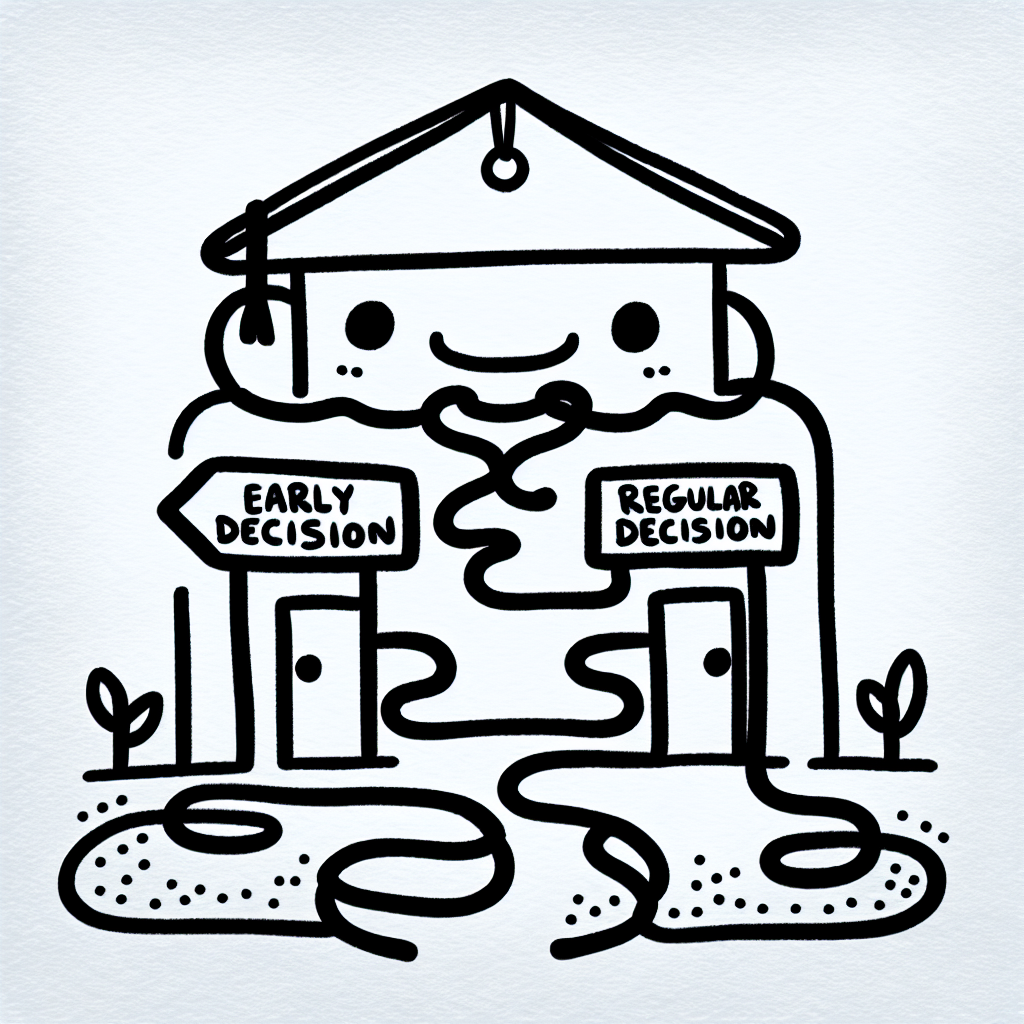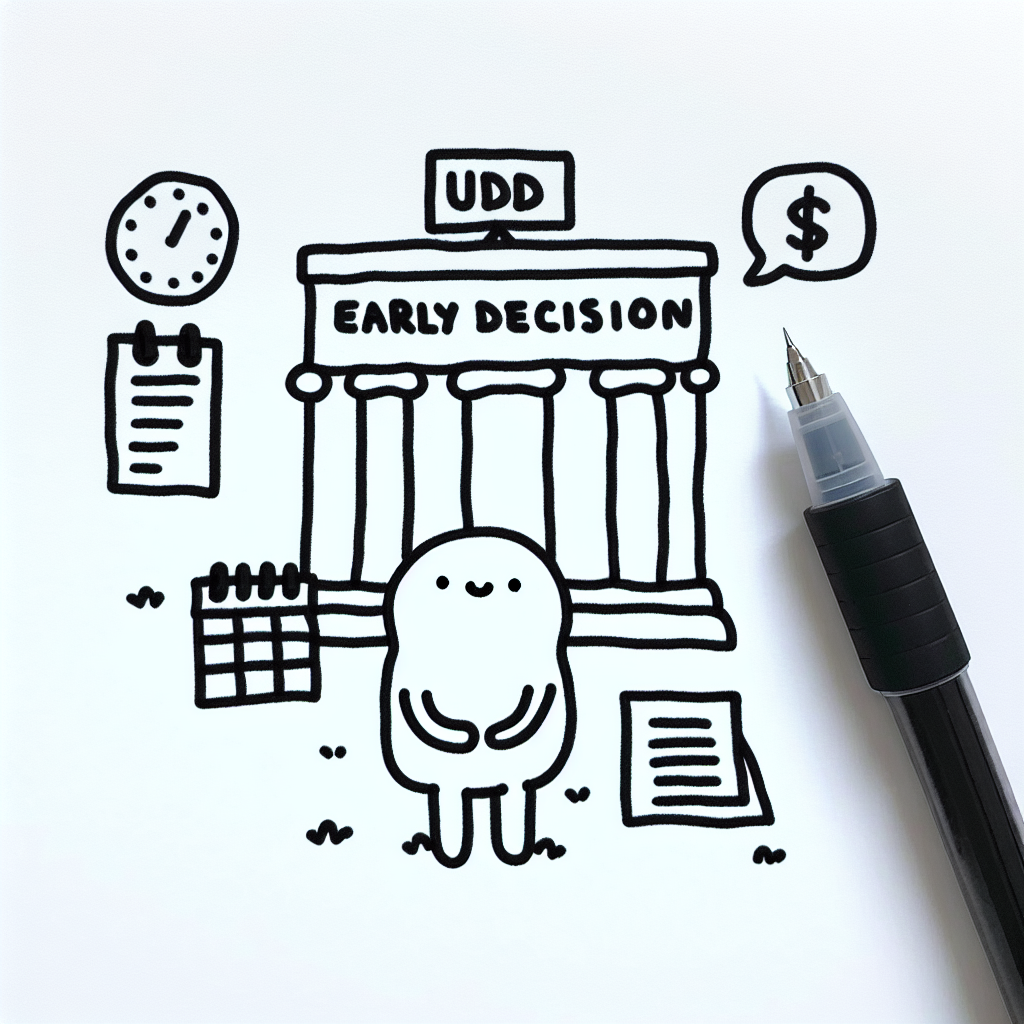Introduction
Northeastern University has become increasingly competitive in recent years, attracting a growing number of applicants from across the country and around the world. As the university's profile rises, so does the intensity of its admissions process. One key factor influencing outcomes is the northeastern early decision acceptance rate, which often differs significantly from the regular decision rate.
Early Decision (ED) has emerged as a crucial component in shaping Northeastern's admissions landscape. By applying ED, students commit to attending if accepted, allowing the university to manage its enrollment more effectively. This commitment can lead to a higher northeastern early decision acceptance rate, making it an appealing option for applicants who view Northeastern as their top choice.
As competition intensifies and acceptance rates drop, more students are turning to ED as a strategic tool to improve their chances. Understanding how the northeastern early decision acceptance rate fits into the broader admissions picture is essential for applicants seeking an edge in a highly selective process.

Understanding Early Decision at Northeastern
What is Early Decision?
Early Decision (ED) is a college admissions plan that allows students to apply to their top-choice school early and receive a decision sooner than the regular admissions timeline. The key characteristic of Early Decision is its binding nature—if a student is accepted under ED, they are committed to enroll and must withdraw all other college applications.
Northeastern University offers two rounds of Early Decision: ED I and ED II. ED I typically has an application deadline in November, with decisions released in December. ED II is intended for students who decide later that Northeastern is their top choice and usually has a January deadline with decisions announced in February. Both options are binding, but they allow flexibility in timing based on a student’s readiness to commit.
Acceptance Rates Snapshot
Early Decision applicants at Northeastern benefit from significantly higher acceptance rates compared to Regular Decision applicants. For the Class of 2028:
- Early Decision I Acceptance Rate: 43%
(Admissionsight.com) - Early Decision II Acceptance Rate: 20% (600 accepted out of 6,000 applicants)
(7edu.org) - Regular Decision Acceptance Rate: 3.8%
(Admissionsight.com)
These figures highlight the strategic advantage of applying through Early Decision for students certain about making Northeastern their top choice.
Historical Comparison
Looking at prior years, the northeastern early decision acceptance rate has remained consistently higher than the rates for regular admission:
- ED Acceptance Rate (Class of 2027): 39%
(Huntnewsnu.com)
Meanwhile, the overall acceptance rate at Northeastern has been trending downward:
- 2022: 6.7%
- 2023: 5.6%
- 2028: 5.2%
(Huntnewsnu.com)
This trend underscores why many applicants view the northeastern early decision acceptance rate as a more favorable option compared to the increasingly competitive regular admission pool.

The Rise of Early Decision Applications
Explosive Growth Since 2015
Since 2015, Northeastern University has experienced a dramatic 660% increase in Early Decision (ED) applications (Huntnewsnu.com). This surge aligns with a broader trend in which students seek to improve their odds in a competitive admissions environment. Several factors contribute to this uptick. First, there is growing awareness among applicants about the strategic advantage of applying ED, which often comes with a higher northeastern early decision acceptance rate compared to regular decision. Second, Northeastern’s national reputation has strengthened, attracting a broader and more competitive applicant pool. Finally, many students prefer the certainty of securing admission early, avoiding the stress of the traditional admissions timeline.
Implications of Growth
The rapid expansion of ED applications has implications for both applicants and the university. As more students apply through Early Decision, competition within the ED pool has intensified, potentially reducing the northeastern early decision acceptance rate over time. Additionally, this growth allows Northeastern to be more selective, not only academically but also demographically, shaping the incoming class with greater precision.

Strategic Advantages of Applying Early
Higher Acceptance Rates
One of the most compelling reasons students consider applying Early Decision (ED) to Northeastern University is the significantly higher acceptance rate. For the Class of 2028, the ED I acceptance rate was 43%, compared to just 3.8% for Regular Decision (RD). This stark contrast highlights the strategic advantage of applying early, especially for highly competitive applicants targeting selective institutions.
Demonstrated Interest Matters
Applying through ED also signals a strong commitment to Northeastern. The binding nature of Early Decision shows admissions officers that the student is serious about attending if accepted. This level of demonstrated interest is valuable to universities like Northeastern, which aim to maintain high yield rates—the percentage of admitted students who choose to enroll.
Earlier Decision Timeline
Students who apply through Early Decision typically receive their admissions results by December or January, well ahead of the March or April timeline associated with Regular Decision. This early notice can provide peace of mind and additional time to plan for the transition to college, including financial planning, housing arrangements, and academic preparation.
Financial Considerations
While ED offers many strategic benefits, there are financial implications to consider. Because Early Decision is binding, students must commit before comparing financial aid packages from other schools. It's essential to use Northeastern’s Net Price Calculator and review its financial aid policies in advance to ensure the cost of attendance is feasible. Understanding these factors ahead of time is crucial for families making an informed commitment.

Who Should Consider Applying Early?
Applying early decision (ED) to Northeastern can be a strategic move, especially considering the typically higher northeastern early decision acceptance rate compared to regular decision. However, ED is a binding commitment, making it suitable only for students who meet specific criteria.
Ideal ED Candidates
Students who should consider applying early include those who are confident that Northeastern is their clear first-choice school. These applicants often have a strong academic and extracurricular profile already established by the end of their junior year. Additionally, because ED does not allow for comparing financial aid packages, ideal candidates are financially prepared to commit to Northeastern without needing to review other offers.
Who Might Avoid ED
Conversely, students who need to compare financial aid options may want to avoid early decision, as the binding nature of the process can limit flexibility. Similarly, applicants who believe they could benefit from additional time to improve their GPA or standardized test scores might be better served by applying during regular decision. Lastly, students who are still undecided about their top-choice school should not rush into a binding commitment that may not align with their evolving preferences.

🔍 Comparing Early Decision I and II
When evaluating the northeastern early decision acceptance rate, it's important to distinguish between Early Decision I (ED I) and Early Decision II (ED II), as both offer different strategic advantages depending on a student's academic profile and timeline.
ED I
Early Decision I typically has a deadline in November, making it ideal for students who have already compiled a strong academic record by the end of their junior year. For the Class of 2028, the northeastern early decision acceptance rate for ED I was 43%, reflecting a significantly higher rate than other admissions rounds. This option is best suited for applicants who are confident that Northeastern is their first choice and are ready to commit early.
ED II
Early Decision II usually has a later deadline in January, giving students additional time to strengthen their applications. This round is often used by students who were deferred or rejected from other early decision schools or who needed the fall semester to improve their academic profile. However, the northeastern early decision acceptance rate for ED II was notably lower at 20% for the Class of 2028. While ED II still demonstrates a strong interest in the university, it tends to be more competitive than ED I.

📊 Northeastern's Broader Admissions Landscape
Northeastern University has seen a dramatic surge in application volume, with nearly 100,000 applicants vying for spots in the Class of 2028 (Huntnewsnu.com). This record-breaking interest has contributed to a significant drop in the university’s overall acceptance rate, now at a historic low of 5.2%.
This increasing competitiveness is not limited to the regular decision pool; the northeastern early decision acceptance rate has also become more selective. Early Decision (ED), once seen as a more accessible route, is now part of an overall trend toward heightened selectivity across all admission rounds. As Northeastern works to admit a class that meets its institutional goals, ED has become a strategic tool for both applicants and the university.
From the university’s perspective, ED plays a key role in managing enrollment and maximizing yield—a metric that significantly impacts rankings and reputation. By prioritizing students who commit early, Northeastern can better control class composition and ensure a higher percentage of admitted students ultimately enroll. This strategy supports the university’s broader goals, including maintaining a strong position in national rankings and reinforcing its competitive image. As a result, the northeastern early decision acceptance rate reflects not only applicant demand but also institutional priorities.

Final Thoughts for Applicants
Applying Early Decision to Northeastern can significantly improve your chances of admission. The northeastern early decision acceptance rate is typically higher than that of Regular Decision, reflecting the university’s preference for students who demonstrate a strong commitment to attending. However, this route is not without important considerations.
First, students must assess their academic readiness. Because Early Decision applications are typically due in November, applicants must have solid grades and test scores by the end of their junior year or early senior fall. Additionally, crafting a compelling application under tighter timelines requires strong planning and time management.
Second, applying Early Decision is a binding commitment. If admitted, you are expected to enroll and withdraw all other college applications. This makes it essential to evaluate whether Northeastern is truly your top choice.
Third, financial implications must be weighed carefully. Since applicants commit before receiving financial aid offers from other schools, families should use Northeastern’s net price calculator to estimate costs in advance.
As competition intensifies and the northeastern early decision acceptance rate continues to be more favorable than regular admissions, ED remains a strategic option for students who are academically prepared, financially informed, and fully committed to Northeastern.

📚 References
- Admissionsight.com – Northeastern Acceptance Rate
- Huntnewsnu.com – Early Decision Trends
- 7edu.org – Early Admissions Results
- Huntnewsnu.com – Overall Acceptance Rate Trends














